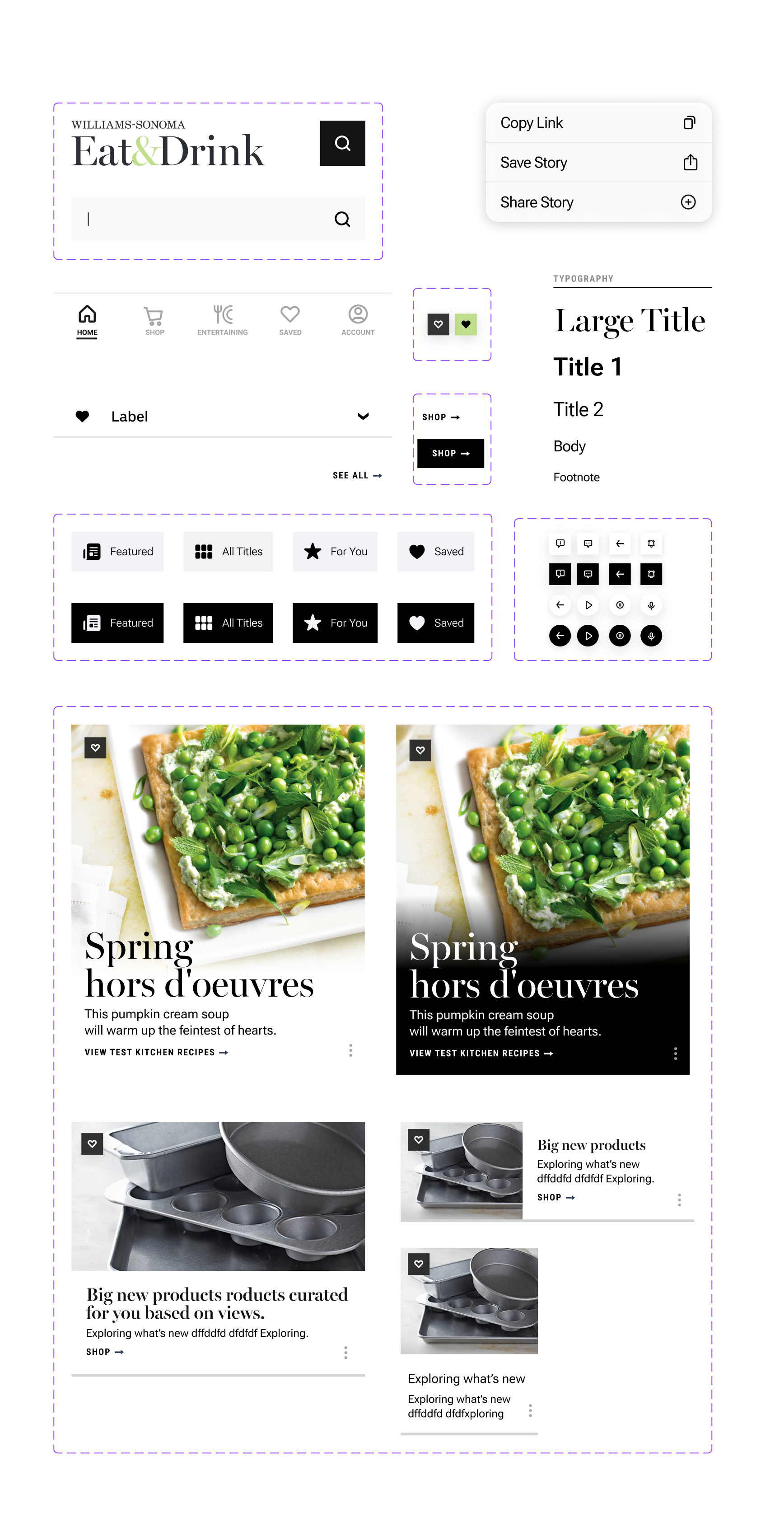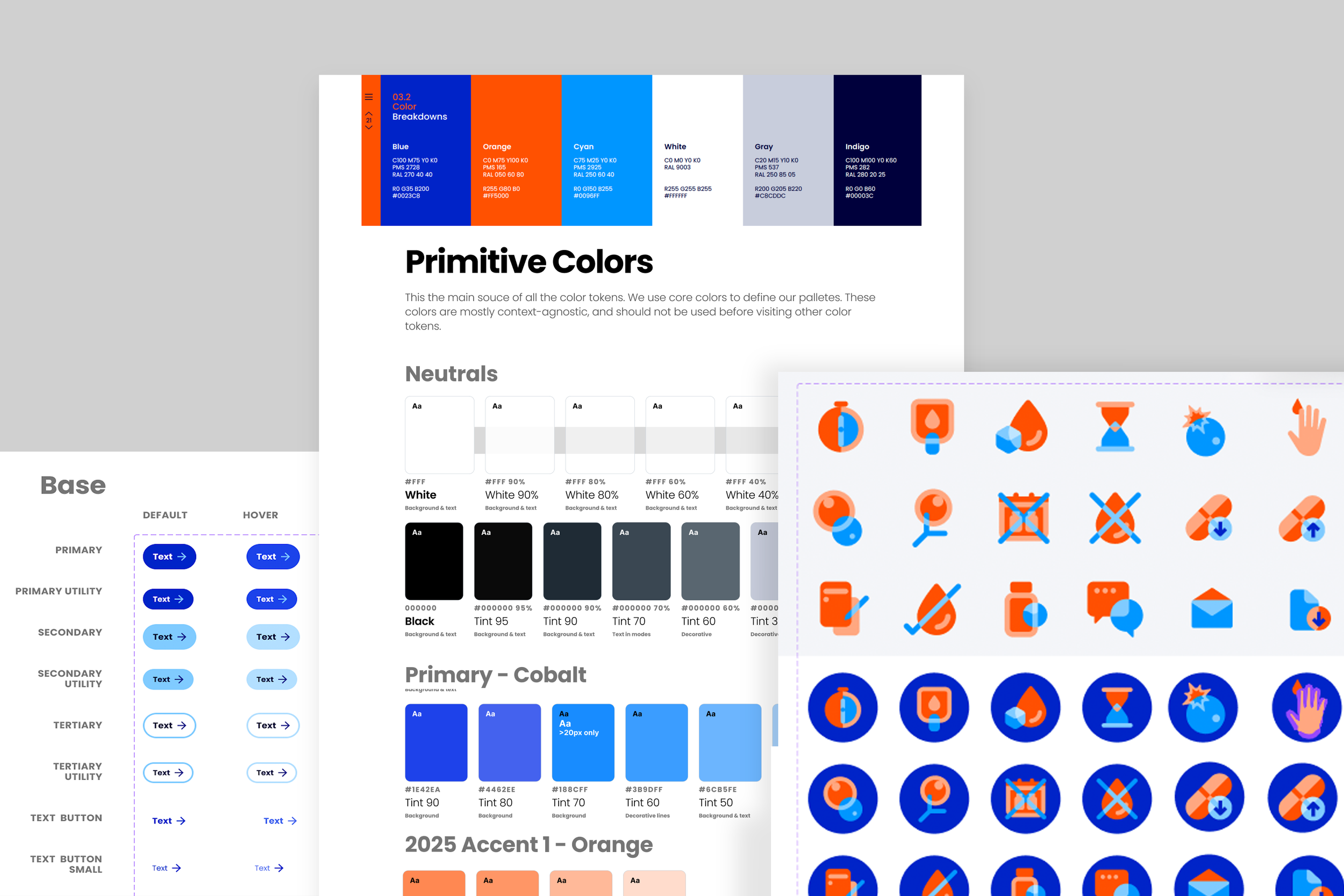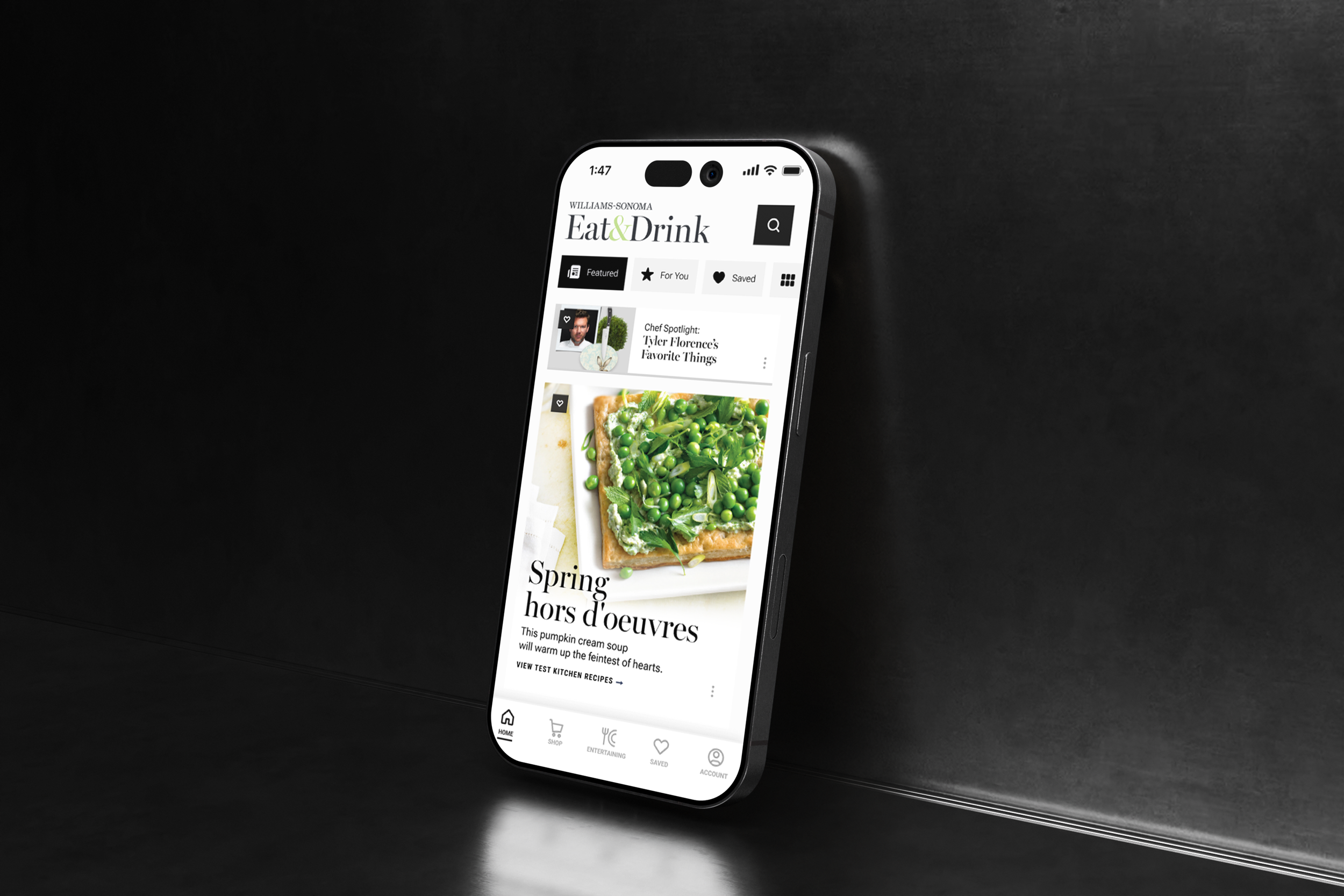Williams-Sonoma Eat & Drink App
E-commerce app prototype blending editorial inspiration and catalog sales
Williams-Sonoma wanted to modernize their digital experience by combining their cookbook editorial content with their product catalog. I led the design of a fully built Eat&Drink app that allowed users to explore recipes and directly purchase related products. The project was completed end-to-end and prepared for release, connecting editorial inspiration with commerce in one cohesive experience.
Role:
Lead Product Designer
Industry:
Home Entertaining Ecommerce
Duration:
3 months
Lead Product Designer at Galvanized, working alongside a Creative Director, writer, and the company CEO.
Audited Williams-Sonoma’s cookbook and catalog content to identify opportunities for editorial-commerce integration.
Defined the app’s information architecture and user flows, ensuring a smooth path from browsing inspiration to purchasing products.
Designed the app UI, including personalized recommendations, seasonal campaigns, and dynamic editorial-product pairings.
Collaborated with the writer to align recipes, articles, and visuals with shoppable product CTAs.
Delivered an interactive app build to agency stakeholders, influencing Williams-Sonoma’s ongoing e-commerce strategy and later redesign efforts.
Solution/Process:
We focused on merging inspiration with commerce: editorial content directly linked to relevant products, with a frictionless flow from browsing to buying.
Integrated editorial and e-commerce: Cookbook recipes and entertaining articles paired with related kitchenware and home products.
Personalized recommendations: Included dynamic suggestions based on user browsing behavior and seasonal campaigns.
Streamlined navigation: Designed clear UI patterns to move smoothly between inspirational content and product pages.
Visual storytelling: Balanced photography, recipes, and product shots to create an aspirational but shoppable experience.
Results / Impact
The app was fully built and prepared for launch. While internal scheduling delayed its public release, the work was highly praised and informed Williams-Sonoma’s ongoing e-commerce strategy.
Stakeholder validation: The agency loved the app demo and used it to pitch additional funding.
Framework adoption: Key design patterns from the app influenced Williams-Sonoma’s subsequent redesign and ongoing digital strategy.
Proved demand: User testing validated that editorial-product integration improved engagement and inspired purchases.
Showcased innovation: Demonstrated how an editorial-commerce hybrid could drive both inspiration and revenue.
Other Projects







